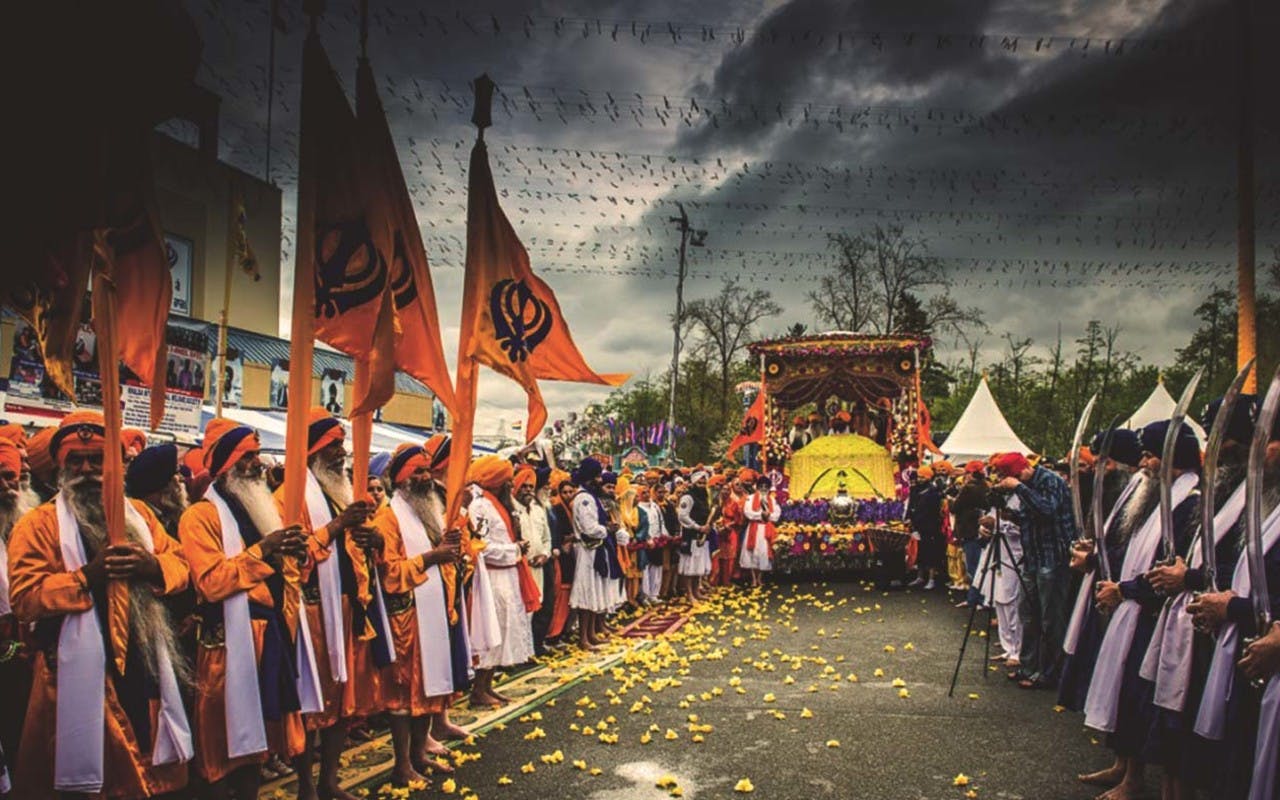
Jess, a first-class Manager-walli in Dishoom Edinburgh, (she’s awesome) has taken some time to tell us a little about Vaisakhi and what it means to her and her family. We’re ever-grateful Jess… you’re a big-hearted gem.
Vaisakhi, a day marked across India by people of many faiths, is celebrated in the Punjab as the start of the new Harvest. It falls on the 13th April this year.
A particularly important day for villagers, landowners and farmers, it’s the day they give thanks for their prosperous land and the crops they were able to harvest that year, while at the same time praying for another fortunate year of cultivation. Without this crop, they would have no income, and no means of feeding their families, friends, and fellow villagers. In a very dry and hot country, this is a truly significant day on which hopes lie for good fortune in the following year. You could, therefore, consider it as India’s Thanksgiving.
For others, this marks the start of the New Year and streets fill with the sound of music and laughter while families and communities dance, eat and celebrate together.
Vasaikhi is also a commemoration of the day that Sikhism was born as a collective faith.
Growing up, I remember Vaisakhi being a time of parades and street parties. I grew up in a town with a high concentration of Sikhs (and Indians of all faiths, for that matter). The day would start with a religious procession where floral decorated carriages dressed in flags and the colours of the Khalsa (navy and orange) would carry as many people as they could fit. The rest would follow on foot.
They were following the ‘Guru Granth Sahib’ – our Holy Bible if you like. The last and eternal Guru with all the teachings, stories and encounters of the first ten Guru’s in their journey to reach the final stage of enlightenment and eternity.
The significance of this is to celebrate the day that ‘Guru Gobind Singh’ the 10thand last Guru, chose to form the Sikh brotherhood of the Khalsa know as the ‘Panj Pyare’ – the beloved Five – in 1699. This was a very small army of Sikh warriors that was prepared to risk their lives to protect the religious freedoms and equalities of the people of India who came under attack from the Mogul Empire, attempting to strip the country of its multiple faiths and religions, liberties and riches.
As the procession continued, the streets would fill with friends, families, neighbours and anyone that wanted to join in. Residents would prepare and distribute fresh tea and snacks to all those taking part in the processions, whatever their faith or beliefs. Five men representing the ‘Panj Pyare’, walking barefoot, would lead the carriage carrying the ‘Guru Granth Sahib’ through the streets, and it would end with a ceremonial sword fight – the weapon of choice for these 5 warriors.
But the celebrations wouldn’t end here. Most of the town would be pedestrianised for the day and people of all faiths, backgrounds and persuasions would come together to dance, sing and play in the streets. Everyone was welcome to join the party and it was, without doubt, the celebration that me and my family looked forward to the most.
As Dishoom is a place where we celebrate differences and believe in the power of food to break down barriers and bring people together, it is only fitting that we invite everyone to join us in marking this special day.
To celebrate, our Chef-wallas have prepared a traditional Punjab staple — Sarson ka Saag. Slow-cooked mustard leaves and spinach, tempered with ghee, cumin, green chillies, garlic, and onions. Finished with a dollop of butter and served beside makki (maize) ki rotis, tamarind-onion chutney, and jaggery. Do stop at your closest Dishoom for a flavourful bowl between 8th — 21st April. Relish it before it’s gone. Vaisakhi di lakh lakh vadhaiyan.
Happy Vaisakhi to you all!

The July issue of Dishoom Loves is already here (and perky, for your eyes). Fill your mind with some of the best South Asian talent, from a 17-year-old playwright sharing her life story, to a beauty expert’s top tips and tricks. And, a doctor who writes about henna.

Arched into the cobbled lane of Trinity Street, behind a mustard yellow door, an all-day bar-café cuts loose. Not to be confused with the buzzy bars in Dishoom cafés, this Permit Room is entirely other – a tribute to the way Bombay kicks back and cuts loose – a salute to the city’s permit rooms, beer bars and drinking holes.

June brings the promise of sun-drenched days – or monsoons – balmy nights and a smattering of first-class cultural happenings.

People, community and planet.